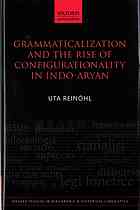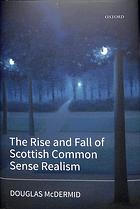Grammaticalization and the rise of configurationality in Indo Aryan 1st Edition by Reinöhl 0191056376 9780191056376
$50.00 Original price was: $50.00.$25.00Current price is: $25.00.
Grammaticalization and the rise of configurationality in Indo-Aryan 1st Edition by Reinöhl – Ebook PDF Instant Download/DeliveryISBN: 0191056376, 9780191056376
Full download Grammaticalization and the rise of configurationality in Indo-Aryan 1st Edition after payment.

Product details:
ISBN-10 : 0191056376
ISBN-13 : 9780191056376
Author: Reinöhl
This book examines historical changes in the grammar of the Indo-Aryan languages from the period of their earliest attestations in Vedic Sanskrit (around 1000 bc) to contemporary Hindi. Uta Reinöhl focuses specifically on the rise of configurational structure as a by-product of the grammaticalization of postpositions: while Vedic Sanskrit lacks function words that constrain nominal expressions into phrasal units – one of the characteristics of a non-configurational language – New Indo-Aryan languages have postpositions which organize nominal expressions into postpositional phrases. The grammaticalization of postpositions and the concomitant syntactic changes are traced through the three millennia of Indo-Aryan attested history with a focus on Vedic Sanskrit, Middle Indic Pali and Apabhramsha, Early New Indic Old Awadhi, and finally Hindi. Among the topics discussed are the constructions in which the postpositions grammaticalize, the origins of the postpositional template, and the paradigmatization of the various elements involved into a single functional class of postpositions. The book outlines how it is semantic and pragmatic changes that induce changes on the expression side, ultimately resulting in the establishment of phrasal, and thus low-level configurational, syntax.
Grammaticalization and the rise of configurationality in Indo-Aryan 1st Table of contents:
1: Introduction
1.1 Contextualization
1.2 The corpus
1.2.1 General remarks
1.2.2 Texts
1.2.3 Data
1.3 Outline of the study
2: Grammaticalization and configurationality
2.1 Grammaticalization
2.2 Non-configurationality: A brief history
2.3 Non-configurationality and nominal expressions
2.3.1 The Wackernagel position
2.3.2 True and apparent discontinuity
2.3.3 Correlates of discontinuous nominal expressions
2.4 What is different between Vedic Sanskrit and Hindi?
2.4.1 Vedic Sanskrit
2.4.1.1 Non-configurationality in Vedic Sanskrit
2.4.1.2 Non-configurationality and nominal expressions in Vedic Sanskrit
2.4.1.3 Correlates
2.4.2 Hindi
2.5 Configurationality as a historical phenomenon
2.6 Grammaticalization and the development of phrasal structures
2.7 Summary
3: The diverse origins of the Hindi simple postpositions
3.1 M `in´
3.2 Par `on´
3.3 Instrumental-ablative se
3.4 Dative-accusative ko
3.5 Ergative ne
3.6 Possessive kā/e/ī
3.7 Summary
4: Local particles: The unique source of adpositions and configurationality in Indo-European?
4.1 The traditional scenario
4.2 Syntax and semantics of the local particles in Old and Middle Indic
4.2.1 Local particles in the Rigveda
4.2.2 Post-Rigvedic developments: The persistency of anu, ā, prati, and tiras
4.3 Why were the local particles not reanalysed as adpositions?
4.4 Conclusion
5: The components of the source constructions
5.1 From symmetrical group to phrase?
5.2 Relational noun expressions in Pali
5.3 The post-Vedic genitive shift
5.3.1 Proliferation of relational noun expressions
5.3.2 Pseudo-nouns
5.3.3 Reanalysis of local case forms
5.3.3.1 Syncretism
5.3.3.2 Gaining ground: The semantic changes of zero-valent adverbs undergoing the genitive shift
5.4 Semantic evidence
5.5 Symmetrical and asymmetrical groups
5.6 Conclusion
6: The origin of the postpositional syntagm
6.1 Why does Indo-Aryan have postpositions?
6.1.1 Language-internal and language-external explanations
6.1.2 Word order patterns of gen + madhye/upari in Old and Middle Indo-Aryan
6.2 The Wackernagel position across time
6.3 Pronominal possessors
6.3.1 Data
6.3.2 Why genpro n order?
6.4 Summary
7: From group to phrase
7.1 Metaphorical change and the obligatorification of possessors
7.1.1 Madhye from Vedic Sanskrit to Apabhramsha
7.1.2 Upari from Pali to Apabhramsha
7.2 Animacy and localization
7.3 The role of pronominal possessors
7.4 From complex to simple spatial relations
7.4.1 Madhye from Apabhramsha to Hindi
7.4.2 Upari from Apabhramsha to Hindi
7.5 Grammaticalization and the emergence of phrase structure
7.6 Conclusion
8: Paradigmatization: A process sui generis?
8.1 Paradigmaticity and the Hindi postpositions
8.2 Scenarios of paradigmatization
8.2.1 The epiphenomenality scenario
8.2.2 The slot-formation scenario
8.3 The emergence of a paradigm
8.3.1 Distribution
8.3.1.1 The selection of a construction
8.3.1.2 The emergence of a hierarchical phrase
8.3.1.3 Retention of earlier form
8.3.2 Complementarity
8.3.2.1 The integration of ergative ne
8.3.2.2 The paradigmaticity of zero
8.4 Converging scenarios
8.5 Conclusion
9: Conclusion
People also search for Grammaticalization and the rise of configurationality in Indo-Aryan 1st:
grammaticalization definition
the rise and fall of rationality in language
a generative rhetoric of the sentence pdf
a grammar of the multitude
a grammatical institute of the english language
Tags: Grammaticalization, the rise, configurationality, Indo Aryan, Reinöhl
You may also like…
Uncategorized
The rise of big government how egalitarianism conquered America First Edition. Edition Larson
Politics & Philosophy
Politics & Philosophy - Social Sciences
History - European History
Engineering
Biomagnetic monitoring of particulate matter : in the Indo-Burma hotspot region 1st Edition Rai
Biography & Autobiography
How dare the sun rise memoirs of a war child First Edition Pesta 0062470167 9780062470164
Politics & Philosophy - European & American Philosophy
The Rise and Fall of Scottish Common Sense Realism First Edition. Edition Ferrier
History - American Studies
Religion & Spirituality - Spirituality












